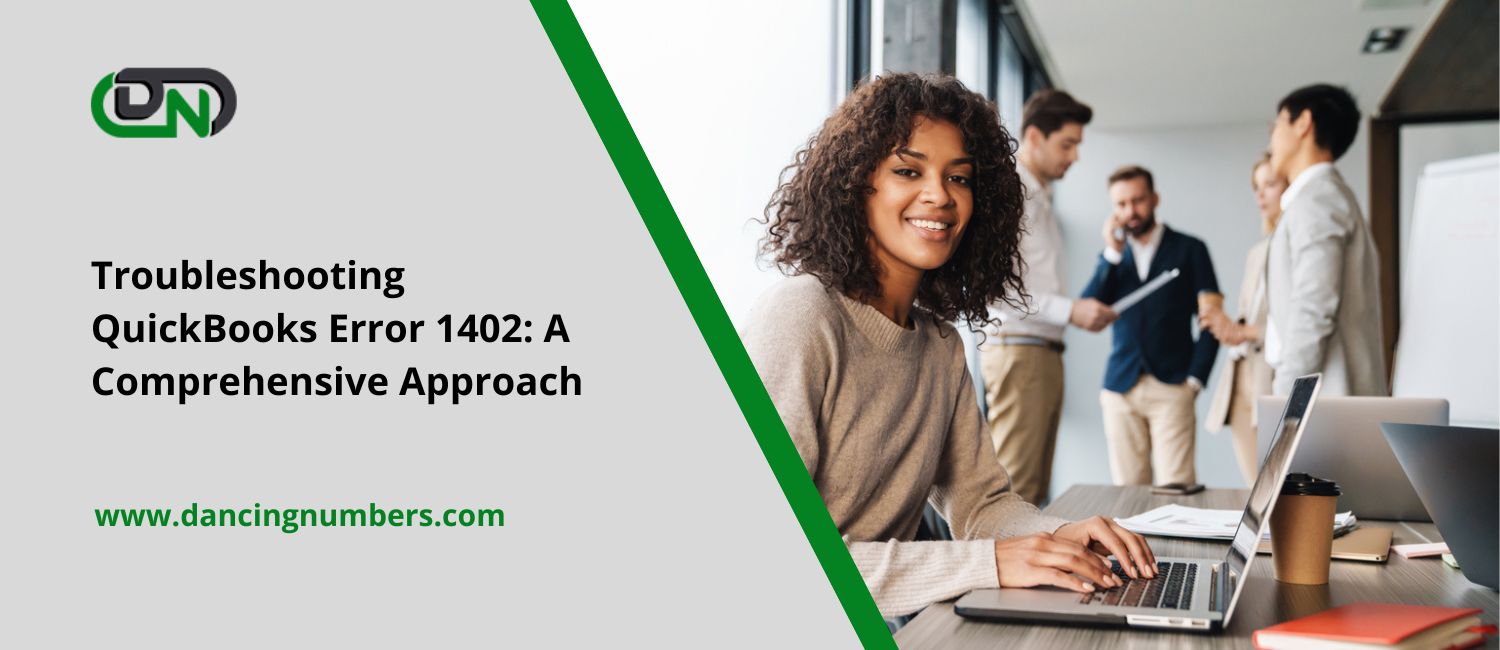
QuickBooks stands as a cornerstone for countless businesses, facilitating efficient financial management. However, encountering errors is not uncommon in any software, and one such hurdle is QuickBooks Error 1402. This error often emerges due to Windows registry complications, hindering the smooth functioning of QuickBooks installations and updates. In this guide, we'll explore the intricacies of Error 1402 and provide detailed steps to resolve it effectively.
Understanding QuickBooks Error 1402
QuickBooks Error 1402 typically stems from issues within the Windows registry system. The error message commonly states: "Error 1402: Could not open key [key name]. Verify that you have sufficient access to that key, or contact your support personnel." This message signifies the installer's inability to access specific registry keys crucial for QuickBooks functioning.
Causes of QuickBooks Error 1402
Various factors contribute to the occurrence of Error 1402 in QuickBooks, including:
· Insufficient Windows user permissions: When Windows user accounts lack adequate permissions to access or modify necessary registry keys, Error 1402 may surface.
· Corrupted or damaged registry entries: Any corruption or damage to the registry entries associated with QuickBooks can trigger Error 1402.
· Conflicts with third-party applications: Certain third-party applications or antivirus programs may disrupt the QuickBooks installation process, leading to Error 1402.
· Incomplete installation or uninstallation of QuickBooks software: Interrupted or incomplete installation or uninstallation processes of QuickBooks can leave behind registry errors, culminating in Error 1402.
Resolving QuickBooks Error 1402
To address QuickBooks Error 1402 effectively, follow these step-by-step troubleshooting procedures:
1. Log in as an Administrator:
Ensure you're logged in to your computer with administrative privileges. If not, switch to an Administrator account.
2. Temporarily Disable Antivirus Software:
Disable any active antivirus or security software temporarily, as they might impede the QuickBooks installation process.
3. Utilize QuickBooks Install Diagnostic Tool:
Download and run the QuickBooks Install Diagnostic Tool from the official Intuit website. This tool automatically identifies and rectifies installation issues, potentially resolving Error 1402.
4. Adjust Registry Permissions:
Manually modify the permissions for the registry keys linked to QuickBooks. Grant full control to the user account conducting the installation by following these steps:
a. Open the Run dialog box by pressing Windows + R.
b. Enter "regedit" and press Enter to launch the Registry Editor.
c. Navigate to the registry key specified in the error message.
d. Right-click on the key, choose Permissions.
e. In the Permissions dialog box, grant Full Control to the user account, then click Apply > OK.
f. Exit the Registry Editor and attempt reinstalling QuickBooks.
5. Perform a Clean Install:
If previous steps fail to resolve Error 1402, resort to a clean install of QuickBooks. This entails uninstalling QuickBooks, eradicating residual files and registry entries, and subsequently reinstalling the software.
Conclusion
QuickBooks Error 1402 poses a challenge, but with systematic troubleshooting, it can be overcome. By adhering to the strategies delineated in this guide, you can effectively tackle Error 1402 and ensure the uninterrupted functionality of QuickBooks. Should you encounter hurdles during the troubleshooting process, seek guidance from QuickBooks support or enlist the expertise of a professional IT technician.



























